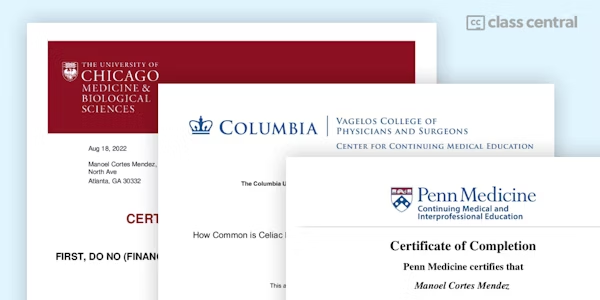This course introduces learners to a variety of infectious diseases using a patient-centered, story-based approach. Through illustrated, short videos, learners will follow the course of each patient’s illness, from initial presentation to resolution. Integrating the relevant microbiology, pathophysiology and immunology, this course aims to engage and entice the learner towards future studies in microbiology, immunology and infectious diseases.
The patient-centered videos included in this course were created as part of the Re-imagining Medical Education initiative, led by Charles Prober MD, Senior Associate Dean of Medical Education at the Stanford School of Medicine. This initiative was the first of its kind to explore the collaborative creation of foundational medical education online content by inter-institutional teams of faculty. The content presented in this course was created by faculty from Stanford University School of Medicine, in collaboration with The University of Washington School of Medicine, Duke University School of Medicine, UCSF School of Medicine, and The University of Michigan Medical School. Support for this initiative was provided by the Robert Wood Johnson Foundation and the Burke Family Foundation.
PLEASE NOTE: Information provided in this course is for educational purposes only and is not intended to be used for diagnostic and/or treatment purposes.
Overview
Syllabus
- Introductory Module
- In Module One, we will begin to hear how some microbes cause disease in humans. We will familiarize ourselves with the human immune system, including the cells that make up the innate and adaptive immune responses. We will also examine the relationship between socioeconomic conditions and infectious disease as we explore the story of one person’s experience with cholera. By the end of this module, learners will be more familiar with how the host immune defenses actively defend the body against disease-causing microbes. After each lecture, there is a glossary of terms pertaining to that lecture, which will assist learners in answering the quiz questions. Learners can also find a glossary of all terms from the course, listed alphabetically, under the "Resources" tab.
- Bacterial Infections Part 1
- In Module Two, we will explore six infectious diseases caused by bacteria. We will see how factors like agricultural practices, prior infections, smoking history, and financial situations can play a role in infectious disease. By the end of this module, learners will be able to interpret the clinical presentation of these six infectious diseases and describe the relevant microbiology, pathophysiology, and immunology.
- Bacterial Infections Part 2
- In Module Three, we will explore seven additional cases of infectious disease involving bacteria. We will see how a timely and accurate diagnosis can be vital for a patient's survival. By the end of this module, learners will be able to interpret the clinical presentation of these seven infectious diseases and describe the relevant microbiology, pathophysiology, and immunology.
- Viral Infections Part 1
- In Module Four, we will explore five cases of infectious disease involving viruses. We will see how factors like social stigma, prior infections, access to medications, and family history can play a role in infectious disease. We will also examine the link between viruses and some cancers. By the end of this module, learners will be able to interpret the clinical presentation of these five infectious diseases and describe the relevant microbiology, pathophysiology, and immunology.
- Viral Infections Part 2
- In Module Five, we will explore five additional infectious diseases caused by viruses. We will also apply our knowledge of the immune system to explore the use of vaccines, and understand the history of the MMR vaccine. By the end of this module, learners will be able to interpret the clinical presentation of these five infectious diseases and describe the relevant microbiology, pathophysiology, and immunology.
- Other Infectious Pathogens
- In Module Six, we will explore six cases of infectious disease caused by mites, protozoa, tapeworms, fungi, and tick-borne bacteria. We will also examine how arthropods like mosquitos and ticks can spread disease. While most of these diseases are caused by infectious pathogens other than viruses and bacteria, learners will be able to apply their knowledge of immunology and microbiology to understand and interpret the clinical presentation of these six infectious diseases.
Taught by
Maya Adam
Tags
Reviews
5.0 rating, based on 1 Class Central review
4.9 rating at Coursera based on 1785 ratings
Showing Class Central Sort
-
This is the best course on infectology I've taken so far. Ever. It was engaging, it was illuminating, it was fun. The use of graphics to illustrate concepts was catching.







